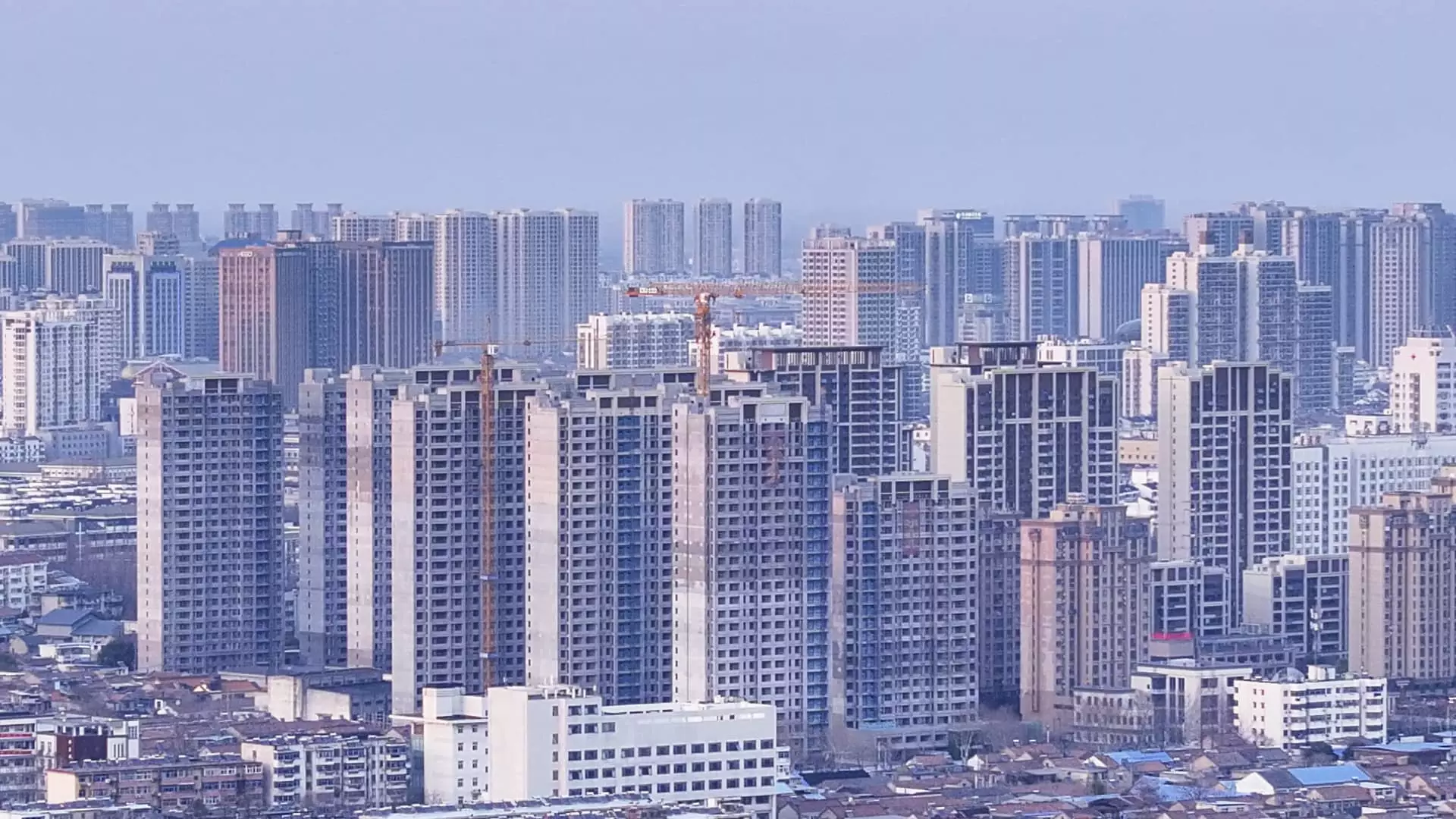China’s real estate sector, often considered the backbone of its economy, has been fluctuating in an overwhelming downturn since late 2020. The industry once contributed significantly to China’s GDP but has since faced a series of predicaments—most notably due to stringent government regulations aimed at curbing excessive debt among property developers. Major players such as Evergrande have defaulted, casting a long shadow over market sentiment and investment decisions. However, recent murmurs from analysts point towards potential stabilization in the market. In light of emerging data, this article aims to explore the factors that may provide a glimmer of hope amid a generally sluggish real estate environment.
Improved Sales Metrics: Glimmers of Hope in Major Cities
Recent reports suggest that sales in some of China’s largest cities have begun to recover. In the last week alone, existing home sales in five major cities saw a spike of over 30% year-on-year, according to data scrutinized by CNBC. While this rise is encouraging, one must critically assess that this uptick may not reflect a national trend but rather localized improvements. It’s a patchwork of growth in an otherwise tumultuous climate. Nevertheless, when positioned against a backdrop of declining sales over the past few years, it becomes a notable development that hints at a shift in consumer sentiment. Are we witnessing the first signs of a resurgence, or is this merely a transient blip?
Secondary Sales: The Unsung Heroes of the Market
Analysts from UBS have shifted their gaze towards secondary transactions, warning that while primary sales still struggle, secondary home sales are expected to account for half of total transactions by 2026. This could serve as a critical linchpin in boosting developer revenues, which have been severely impacted by poor primary market performance. Significantly, the recovery in secondary sales emphasizes the importance of shifting consumer desires. As homebuyers become wary of new constructions fraught with economic uncertainties, they gravitate towards existing homes. This trend speaks volumes about consumer confidence and hints that buyers may be adopting a more cautious approach.
Rental Prices: A Sore Point That Must Heal
Despite some positive signals, rental prices remain an Achilles’ heel in the sector. With no notable improvements reported, they reflect broader malaise in the market. Rising rental costs have historically been seen as a barrier for potential buyers, further complicating the property landscape. Until rental rates experience corrective adjustments, the stabilization of the housing market will remain elusive. Analysts, including Macquarie’s Chief China Economist Larry Hu, underscore the necessity for financial backing from the central bank to galvanize the market. Without addressing this concern, optimistic forecasts may be overly optimistic.
Foreign Investment: A Beacon of Hope or a Risk Factor?
Investor behavior serves as a critical barometer for gauging market health. While local investors exhibit hesitancy, foreign capital is beginning to take note of China’s property market once more. Recent acquisitions by Singaporean developers signal a cautious optimism, but are they truly investing in an undervalued market, or simply jumping into turbulent waters? The creation of partnerships such as Invesco’s joint venture with Ziroom for affordable rental housing marks a notable diversification strategy aimed at tapping consumer needs, but the long-term ramifications of such ventures remain uncertain. Homegrown resilience is necessary, and foreign investment should not be the crutch that the sector leans on.
Policy Moves: Policymakers Walking a Tightrope
Chinese policymakers have attempted to usher in reforms that halt further declines in the real estate market. However, extensive policies have often faltered in execution and credibility. Analysts stress that the recovery of consumer confidence is crucial. Without it, all the policy maneuvers in the world will not revive the morale necessary for sustainable growth. It is a delicate dance between fostering growth and avoiding the pitfalls of excessive regulation. As policymakers grapple with rejuvenating this vital sector, the path toward a truly thriving real estate climate is fraught with challenges.
Looking Ahead: Real Challenges and Uncertain Prospects
With the series of performance indicators still wielding a dual narrative of cautious optimism and skepticism, the real estate market in China remains in a state of flux. Understanding these intricate dynamics will be crucial for stakeholders ranging from policymakers to potential homebuyers. The interplay of complex factors—ranging from regulatory measures to consumer sentiments—will essentially chart the course for the future. Thus, while the glimmers of hope are promising, a prudent approach is requisite. The era of easy answers and quick fixes in China’s property market appears long gone. The question remains whether the indicators signaling stabilization are heralding a long-term recovery or merely a temporary respite in a protracted struggle.

